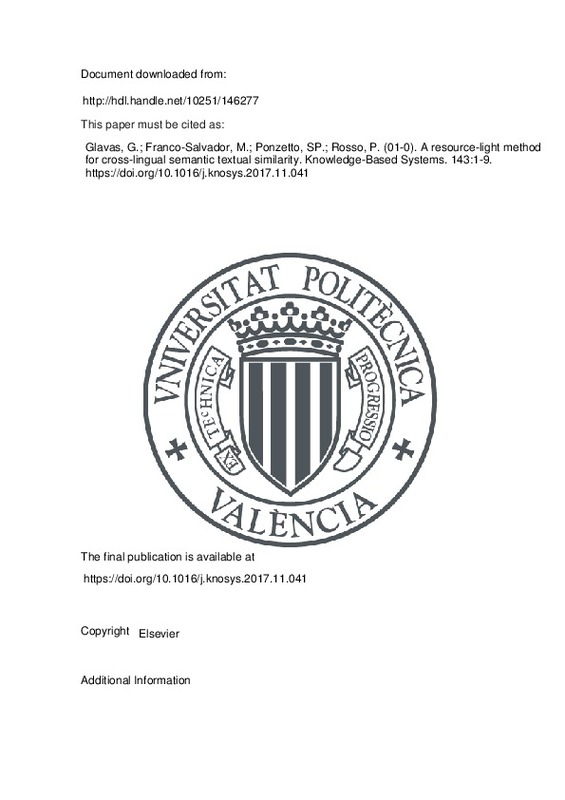JavaScript is disabled for your browser. Some features of this site may not work without it.
Buscar en RiuNet
Listar
Mi cuenta
Estadísticas
Ayuda RiuNet
Admin. UPV
A resource-light method for cross-lingual semantic textual similarity
Mostrar el registro completo del ítem
Glavas, G.; Franco-Salvador, M.; Ponzetto, SP.; Rosso, P. (2018). A resource-light method for cross-lingual semantic textual similarity. Knowledge-Based Systems. 143:1-9. https://doi.org/10.1016/j.knosys.2017.11.041
Por favor, use este identificador para citar o enlazar este ítem: http://hdl.handle.net/10251/146277
Ficheros en el ítem
Metadatos del ítem
| Título: | A resource-light method for cross-lingual semantic textual similarity | |
| Autor: | Glavas, Goran Franco-Salvador, Marc Ponzetto, Simone Paolo | |
| Entidad UPV: |
|
|
| Fecha difusión: |
|
|
| Resumen: |
[EN] Recognizing semantically similar sentences or paragraphs across languages is beneficial for many tasks, ranging from cross-lingual information retrieval and plagiarism detection to machine translation. Recently proposed ...[+]
|
|
| Palabras clave: |
|
|
| Derechos de uso: | Reserva de todos los derechos | |
| Fuente: |
|
|
| DOI: |
|
|
| Editorial: |
|
|
| Versión del editor: | https://doi.org/10.1016/j.knosys.2017.11.041 | |
| Código del Proyecto: |
|
|
| Agradecimientos: |
Part of the work presented in this article was performed during second author's research visit to the University of Mannheim, supported by Contact Fellowship awarded by the DAAD scholarship program "STIBET Doktoranden". ...[+]
|
|
| Tipo: |
|







![[Cerrado]](/themes/UPV/images/candado.png)


